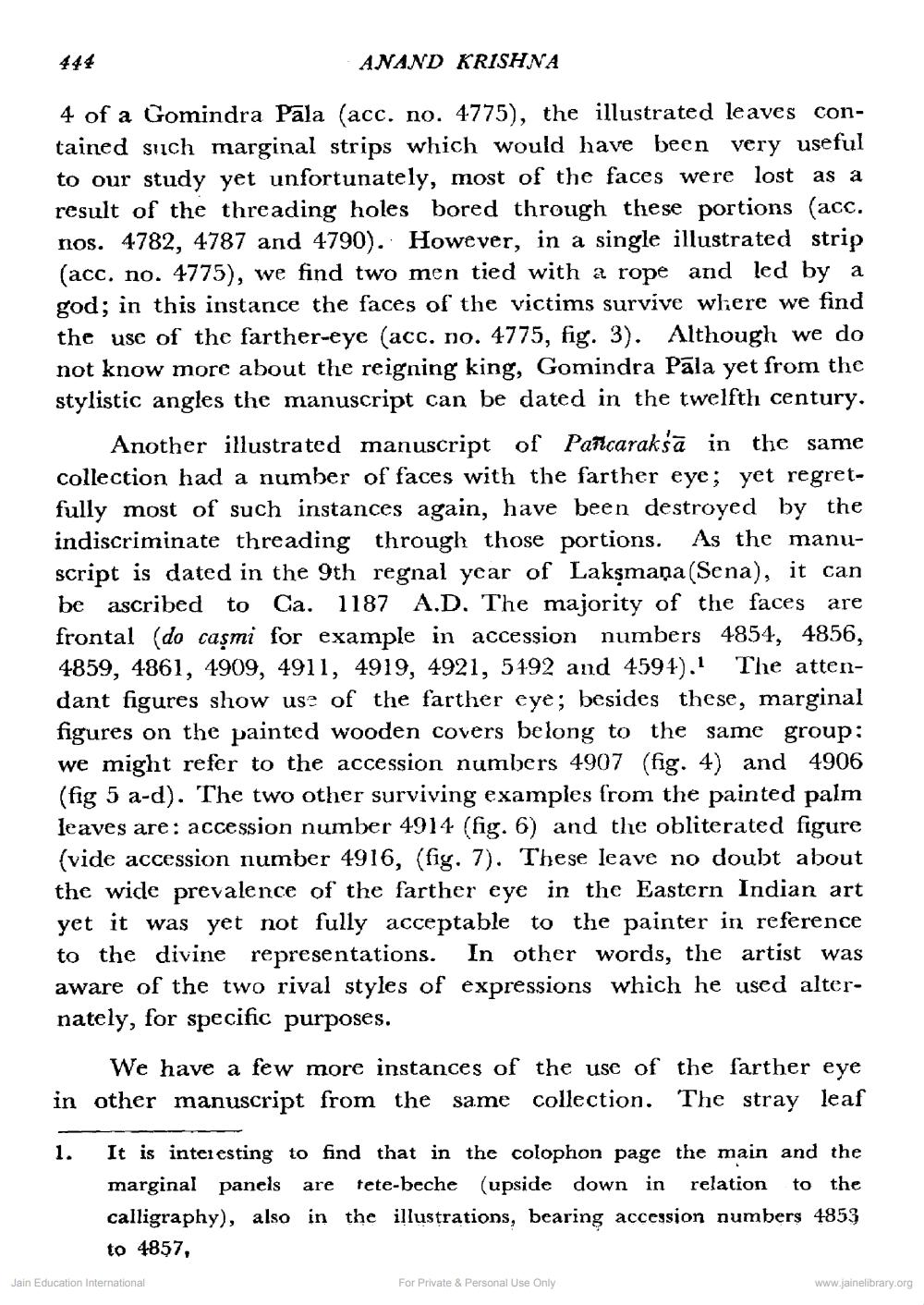________________
- ANAND KRISHNA
4 of a Gomindra Pala (acc. no. 4775), the illustrated leaves contained such marginal strips which would have been very useful to our study yet unfortunately, most of the faces were lost as a result of the threading holes bored through these portions (acc. nos. 4782, 4787 and 4790). However, in a single illustrated strip (acc. no. 4775), we find two men tied with a rope and led by a god; in this instance the faces of the victims survive where we find the use of the farther-eye (acc. no. 4775, fig. 3). Although we do not know more about the reigning king, Gomindra Pala yet from the stylistic angles the manuscript can be dated in the twelfth century.
Another illustrated manuscript of Pancarakšā in the same collection had a number of faces with the farther eye; yet regretfully most of such instances again, have been destroyed by the indiscriminate threading through those portions. As the manuscript is dated in the 9th regnal year of Lakşmaņa (Sena), it can be ascribed to Ca. 1187 A.D. The majority of the faces are frontal (do casmi for example in accession numbers 4854, 4856, 4859, 4861, 4909, 4911, 4919, 4921, 5192 and 4594). The attendant figures show use of the farther eye; besides these, marginal figures on the painted wooden covers belong to the same group: we might refer to the accession numbers 4907 (fig. 4) and 4906 (fig 5 a-d). The two other surviving examples from the painted palm leaves are: accession number 4914 (fig. 6) and the obliterated figure (vide accession number 4916, (fig. 7). These leave no doubt about the wide prevalence of the farther eye in the Eastern Indian art yet it was yet not fully acceptable to the painter in reference to the divine representations. In other words, the artist was aware of the two rival styles of expressions which he used alternately, for specific purposes.
We have a few more instances of the use of the farther eye in other manuscript from the same collection. The stray leaf
1.
It is interesting to find that in the colophon page the main and the marginal panels are tete-beche (upside down in relation to the calligraphy), also in the illustrations, bearing accession numbers 4853 to 4857,
Jain Education International
For Private & Personal Use Only
www.jainelibrary.org




